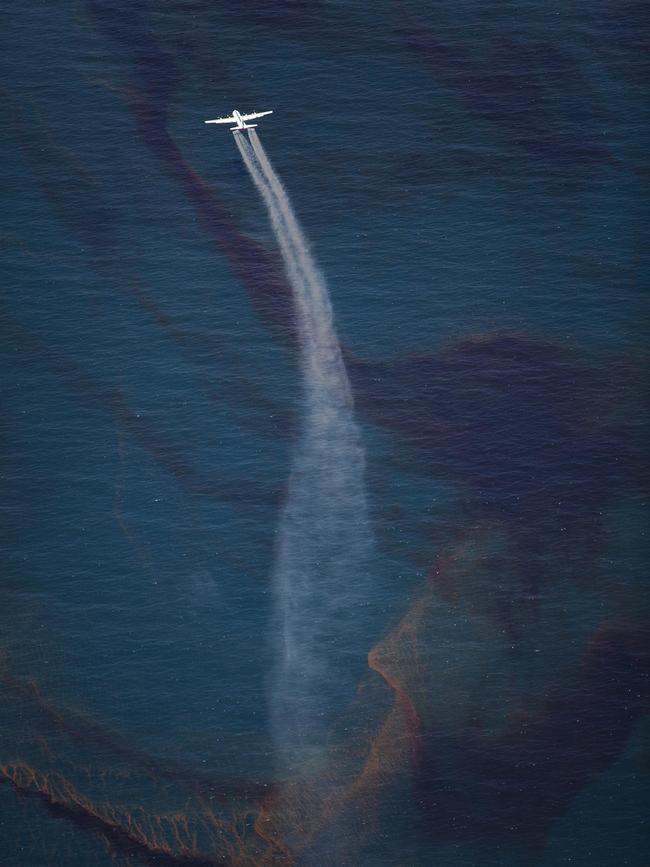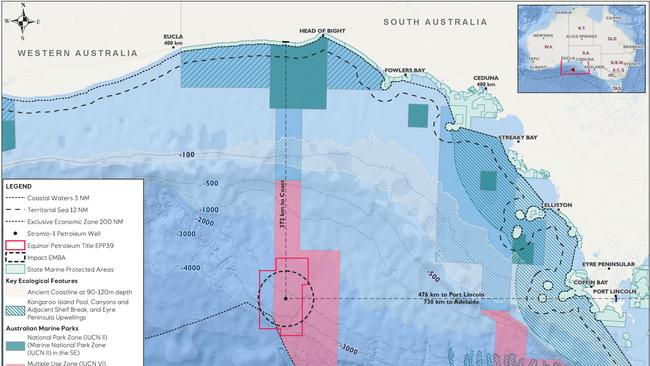Equinor’s plans to use banned dispersant Corexit 9500 to tackle a big oil spill upset Greenpeace and Doctors for the Environment Australia
Norwegian oil giant Equinor plans to use a banned dispersant in the event of a major spill if supplies of other chemicals run low, enraging Greenpeace and Doctors for the Environment Australia.
SA News
Don't miss out on the headlines from SA News. Followed categories will be added to My News.
OPPOSITION to drilling for oil in The Bight is building as the regulator’s deadline for approval of the environment plan approaches next Thursday (November 14).
Greenpeace with Doctors for the Environment Australia slammed Equinor’s plan for oil spill management that relies on a banned dispersant called Corexit 9500, which was widely used in the Deepwater Horizon disaster.

MORE NEWS
What dwells beneath: Great Australian Bight’s hidden treasures
Fight for the Bight: Why drilling divides South Australians
Releasing the joint report, “The Dispersant Delusion: Equinor’s plan to poison the Great Australian Bight with banned toxic chemicals”, lead author Professor Jodie Rummer from James Cook University said Corexit 9500 was banned in Australia in 2012.
“It’s hard to imagine that anything could be worse for The Bight than an oil spill but Equinor’s use of dispersants will make a terrible situation devastating,” she said.
“Studies from the Deepwater Horizon spill show that dispersants mixed with oil are often more toxic to marine life than oil alone. Equinor’s proposed solution will exacerbate the problem by exposing marine life to chemicals whose toxicity is so well-established it has led to their ban.”
But Equinor’s country manager for Australia, Jone Stangeland, said that chemical would only be used if there were “shortfalls in the supply chain” of accepted dispersants.
“Dispersant application is a globally recognised and practised response technique, recognised under the National Plan for Maritime Environmental Emergencies, and is considered the primary and most effective spill mitigation action in the event of a loss of well control leading to a Level 3 oil spill,” he said.
The use of dispersants is set out in the Oil Pollution Emergency Plan submitted to the regulator NOPSEMA for assessment and acceptance before drilling can commence.

Australian Petroleum Production and Exploration Association external affairs director Matthew Doman says dispersants are used worldwide to break up oil slicks and lessen the effects of a spill, especially when oil has the potential to reach shorelines.
“There is scientific evidence that in certain situations dispersants can reduce biological damage,” he said.
“Industry and Governments must determine when it is appropriate to use them and when it is not, with particular reference to environmental concerns.
“In the rare occasion that dispersants are used, they are used only where they have been comprehensively assessed, and that there is a net environmental benefit in their use.”
Founder of Doctors for the Environment Australia, University of Adelaide Emeritus Professor of Medicine Dr David Shearman, said the use of dispersants would be a public health crisis as in the Deepwater Horizon oil spill in the Gulf of Mexico.
“Workers exposed to dispersants like Corexit suffered impacts ranging from nausea to memory loss, nervous system damage, weakness and irritation of the skin, eyes, nose and throat,” he said.
“It is deeply concerning that Equinor has ignored these studies.”

